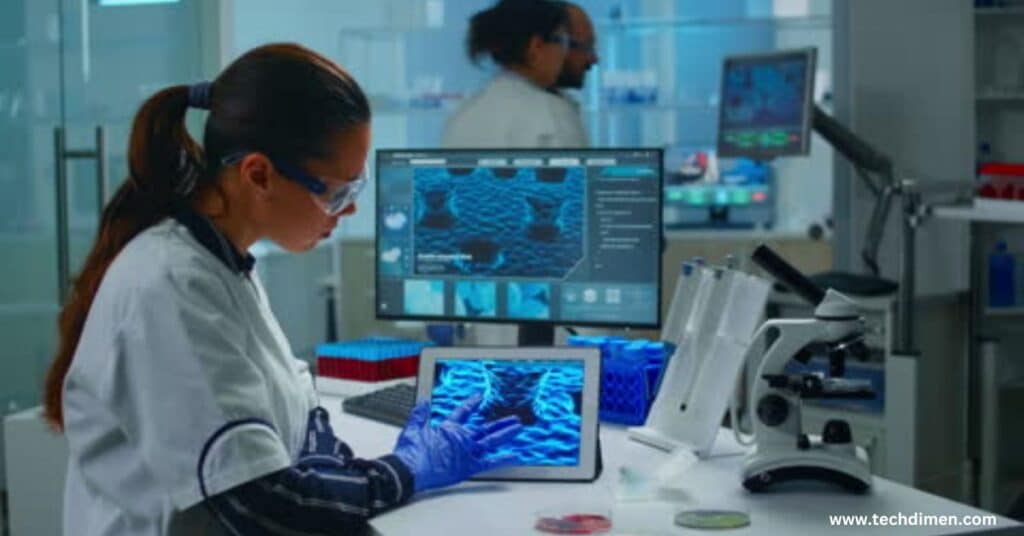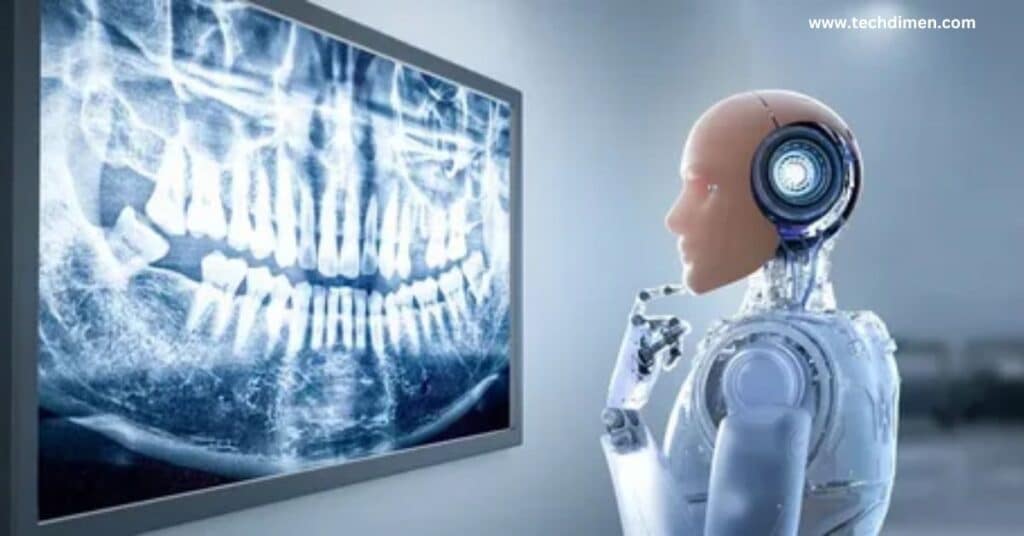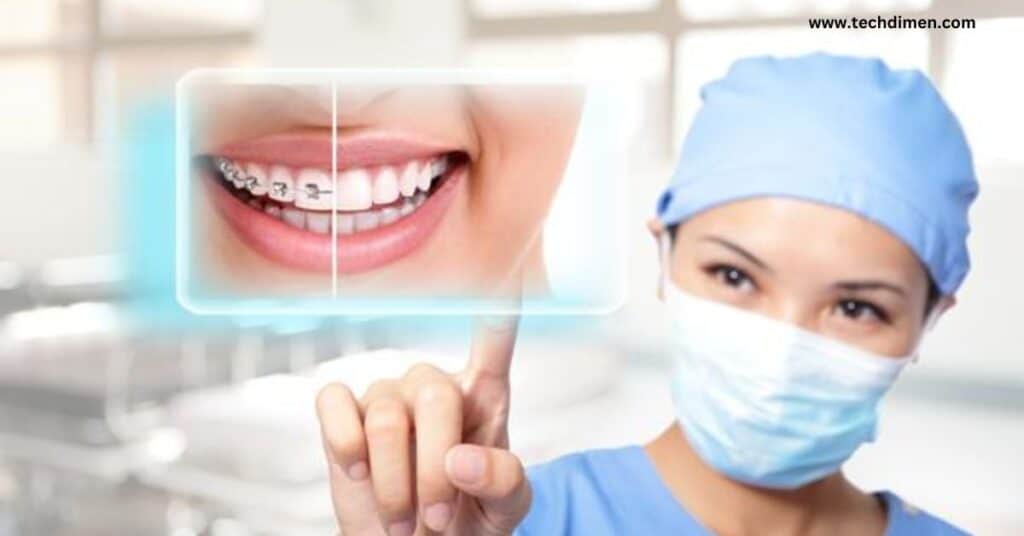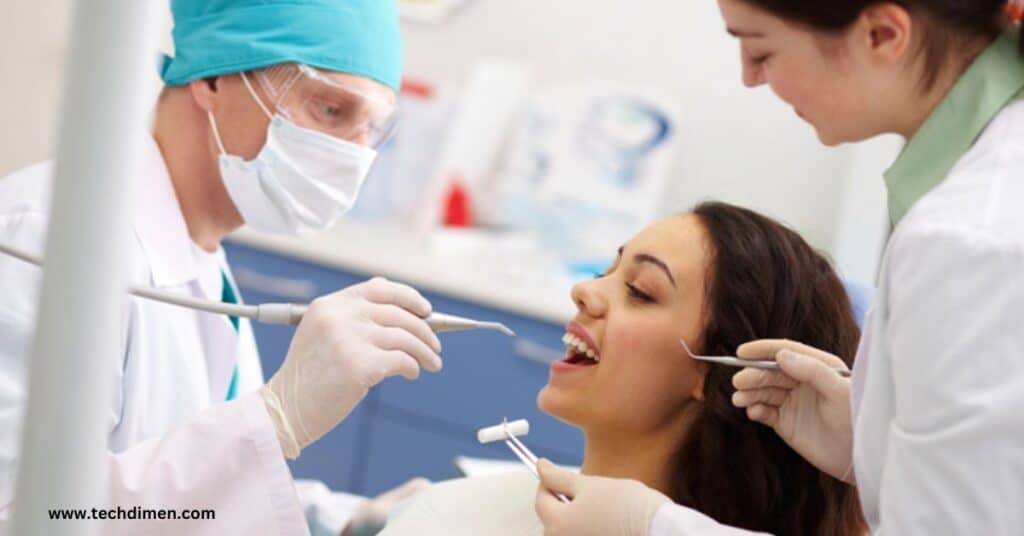Modern dentistry has stepped into a digital era. Today, dental technology services form the foundation of more accurate diagnostics, faster procedures, and an overall improved patient journey. From CAD/CAM systems to AI enhanced imaging, these advancements have changed how dental professionals work.
This guide explores the tools, techniques, and innovations reshaping modern dental care. It’s designed for dentists, lab professionals, and decision makers who want to understand and implement the latest technologies.
What Dental Technology Services Involve
Dental technology services include digital platforms, diagnostic tools, and lab equipment used in clinical and laboratory settings. These services connect practices and labs through this time data sharing, automated workflows, and digital imaging.
The shift from manual molds and film based X-rays to cloud based design platforms and intraoral scanners represents a major leap in both efficiency and patient care. What once took days now happens in minutes.
Technology now powers every corner of a dental practice. this time collaboration, automated records, and imaging tools improve accuracy, reduce patient chair time, and increase case acceptance rates.
Chairside and Lab Technologies That Drive Modern Practice

Intraoral scanners replace messy traditional impressions by generating this time digital models of the teeth. Cone Beam CT imaging systems create 3D scans of the jaw, allowing for better surgical planning and diagnostics. Laser tools help reduce pain and bleeding during procedures.
Dental labs use CAD software to design restorations, 3D printers to fabricate models and surgical guides, and CAM machines to produce durable, high-precision restorations. These tools bring speed and consistency to lab workflows.
Software systems are the glue holding these technologies together. Practice management software handles billing, scheduling, and communication. Diagnostic software improves treatment planning. HIPAA compliant platforms ensure secure data handling.
Breakthrough Innovations in Dental Technology
CAD/CAM systems enable same-day restorations. A digital scan leads to a computer-designed crown, which is milled on-site and delivered in one appointment. This reduces patient visits and eliminates lab delays.
CBCT scanners provide 3D images for evaluating bone structure, identifying root issues, and placing implants more precisely. These scans offer more detail than traditional 2D X-rays.
Dental 3D printing makes it possible to produce temporary crowns, orthodontic aligners, and surgical guides within hours. This process increases productivity while lowering manual labor.
Intraoral scanners are comfortable for patients and eliminate the variability of traditional impressions. They integrate directly with design and printing systems, speeding up case production.
Laser tools reduce the need for anesthesia and allow for faster healing. Dentists use them for gum reshaping, frenectomies, and treating soft tissue lesions.
Artificial intelligence now assists with diagnostics. It scans X-rays, detects cavities, and flags abnormalities with accuracy that rivals trained professionals. AI also supports personalized treatment planning based on patient history and clinical patterns.
Augmented reality helps clinicians plan procedures by projecting anatomical models into the treatment area. It’s also used in training, where students simulate surgeries in a virtual environment.
Clinical Advantages of Adopting Dental Technology Services

Digital imaging tools and AI reduce errors and identify issues earlier. This leads to quicker treatments and better long term outcomes. Patients also benefit from shorter appointments.
Many clinics report a significant drop in chair time after adopting digital workflows. Patients receive same-day crowns, and scanning reduces the need for repeat impressions.
Dental labs using modern software and milling tools can turn around cases within two days. This speed is impossible with traditional manual methods.
Advanced treatment planning software personalizes procedures. Dentists can show patients visual simulations, helping them make informed decisions.
Teledentistry enables remote consultations, treatment monitoring, and follow ups. This is vital for rural clinics and mobile setups.
Inside a Tech-Driven Dental Lab
Labs now rely on software like Exocad for restoration design. They use CAM machines to mill crowns with high accuracy and 3D printers to create surgical guides and aligners.
Sintering furnaces finalize ceramic pieces, making them durable and long-lasting. Lab management software keeps production on track by monitoring inventory, deadlines, and material usage.
Comparing Clinical and Laboratory Dental Technology Services

Clinical tools support diagnostics and direct patient care. These include CBCT scanners, intraoral cameras, and laser systems. They are operated by clinicians in this time.
Laboratory technology focuses on creating restorations. CAD programs, milling machines, and 3D printers belong in this category. Clinics and labs must collaborate through shared digital platforms to maintain consistency.
Role of AI and Machine Learning in Dentistry

AI systems process X-rays in seconds. They detect decay, assess bone loss, and help design treatment plans. Machine learning algorithms learn from large datasets, improving accuracy over time. Voice to text features also reduce the time spent on clinical documentation.
Technology That Enhances Patient Experience
Patients now access records, book appointments, and receive bills through secure online portals. Treatment simulation tools show likely outcomes, which builds trust and reduces uncertainty. Automated reminders and two-way messaging keep patients engaged.
Data Protection and Compliance
HIPAA regulations require all software to maintain encrypted storage and traceable access logs. Secure cloud platforms support remote access while protecting sensitive data.
Dental teams can access case files, radiographs, and treatment plans from any location using cloud-based platforms. This enables collaboration between multiple clinics and lab partners.
Selecting the Right Technology Partner

A reliable dental technology provider offers scalable tools, strong support, regular updates, and compatibility with your existing systems. Many practices overlook integration needs and suffer from poor system performance.
Before choosing a vendor, check whether the system is standalone or modular. Ask how fast their support responds and whether training is included. Compatibility with current imaging and lab systems should be a top priority.
Cost and Return on Investment
Dental practices investing in technology usually break even quickly. CAD/CAM tools often deliver returns in under a year by cutting lab costs. Intraoral scanners show value in a few months by reducing remakes and increasing treatment acceptance.
Technology also reduces operating costs by eliminating redundancy, speeding up workflows, and increasing case output. In house fabrication reduces reliance on external labs.
Who Stands to Gain the Most from Dental Technology

General dentists improve accuracy and comfort using scanners and lasers. Specialists use digital modeling to plan complex cases. Labs increase output and reduce turnaround times. Multi location clinics rely on centralized platforms. Rural providers benefit from portable devices and teledentistry.
Future Trends in Dental Technology
Robotic assisted treatments are on the horizon. AI based planning is growing more advanced. Blockchain could soon secure patient histories, ensuring tamper proof recordkeeping.
Dr. Adam Brooks believes the shift to precision first care is not just near it’s already happening. The combination of AI, robotics, and cloud computing will redefine treatment standards.
Dental technology services have moved beyond being a luxury. They are now the standard for delivering efficient, accurate, and patient friendly care. Staying ahead means embracing change and investing in tools that elevate both practice performance and clinical results.
Related content includes a breakdown of top dental technology providers, how to build a digital ready lab, and a guide to choosing the right CAD/CAM systems for your practice size and goals.
Dental Technology Services Quick Overview
| Technology | Use | Benefit |
|---|---|---|
| CAD/CAM Systems | Design & make restorations | Fast, precise, same day crowns |
| Intraoral Scanners | Capture digital impressions | Comfortable & accurate |
| 3D Printing | Create dental models/appliances | Faster, cost effective output |
| Digital X-Rays | Imaging for diagnosis | Lower radiation, instant images |
| AI Tools | Assist in diagnosis | Enhanced accuracy |
FAQs
What are dental technology services?
Dental technology services involve the use of digital tools, advanced equipment, and specialized software to enhance diagnosis, treatment planning, and patient care in dentistry. This includes CAD/CAM systems, 3D printing, digital imaging, and cloud based dental software.
How do dental technology services benefit patients?
They improve accuracy, comfort, and speed. Patients experience quicker procedures, more precise restorations, and less discomfort with tools like digital scanners and same day crowns.
What technologies are commonly used in modern dental practices?
Common tools include intraoral scanners, 3D printers, cone beam CT machines, digital x-rays, CAD/CAM systems, practice management software, and AI driven diagnostic tools.
Is digital dentistry more accurate than traditional methods?
Yes. Digital workflows reduce human error, enhance measurement precision, and enable this time adjustments, especially in crown design, implant planning, and orthodontics.
How do dental laboratories use technology?
Dental labs use CAD/CAM software for designing restorations, 3D printers for creating models and appliances, and digital impressions for seamless collaboration with clinics.
Can dental technology help reduce treatment time?
Absolutely. Technologies like same day crowns, digital impressions, and in-house milling machines can cut treatment time significantly compared to traditional methods.
What is CAD/CAM in dentistry?
CAD/CAM stands for Computer Aided Design and Computer Aided Manufacturing. It’s used to design and fabricate crowns, bridges, veneers, inlays, and more with high precision and speed.
Are dental technology services expensive?
While upfront costs can be high, they offer long term savings by improving efficiency, reducing chair time, and minimizing remakes or errors. Many clinics find a strong return on investment.
Is dental technology safe and compliant with regulations?
Yes. Reputable dental technology providers comply with HIPAA, ISO, and FDA standards to ensure patient safety, data security, and clinical accuracy.
Final Thought
Embracing dental technology services is no longer a forward-thinking strategy it’s a present day necessity. Clinics and labs that invest in digital tools today are building the foundation for faster workflows, higher treatment precision, and better patient relationships tomorrow. From intraoral scanners to AI powered diagnostics, each advancement brings dentistry closer to a future defined by customization, collaboration, and clinical excellence. As technology continues to evolve, the question isn’t whether to adopt it it’s how fast you can integrate it to stay competitive, compliant, and care driven.

Jhon AJS is a tech enthusiast and author at Tech Dimen, where he explores the latest trends in technology and TV dimensions. With a passion for simplifying complex topics, Jhon aims to make tech accessible and engaging for readers of all levels.







